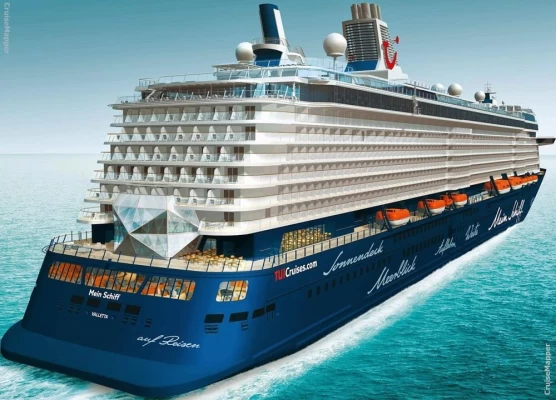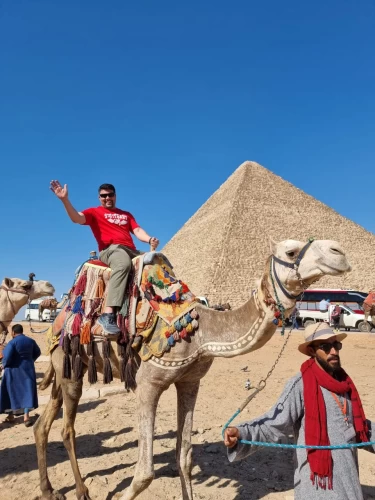
Habib Pasha El-Sakakini Palace
In 1856, a young Syrian named "Gabriel Habib al-Sakakini" came to Egypt, he was born in Damascus in 1841 and took a job at the Suez Canal Company in Port Said. Suez, by sending parcels of hungry cats loaded on camels, eliminating the problem of the spread of rats in the Suez Canal area. Since then, Khedive Ismail relied on the Syrian youth and entrusted the construction of the Khedive Opera to him, and he actually succeeded in completing the construction of the opera on time on November 17, 1869, and the Khedive bestowed upon him the title of "Beck", after which Habib Sakakini became one of the major contractors, and in March 1901 the Pope in Rome granted him the title of "count" for his services to the community.
In 1897, the Sakakini Palace was built on a pond of land called “Qaraja al-Turkmani,” or “Qaraja Pond,” which was granted to him in the area of al-Zahir called Sheikh Qamar. The palace was owned by the state, and one of Sakakini's grandsons, who was a doctor, donated his share to the Ministry of Health.
In the period from 1961-1983, the palace became the headquarters of the Museum of Health Education, and at the end of the period after the museum was moved from the palace, some of the museum's exhibits were stored in the basement of the palace, and in 1987 the palace was registered as Islamic and Coptic antiquities by a decision of the Prime Minister, to be placed Under the auspices of the Supreme Council of Antiquities.
The area of the palace is about 2698 square meters and it was built in the Italian style, as it is considered a model for the art of "Rococo", an art that belongs to the decoration in architecture, interior and exterior decoration, as well as furniture, photography, and sculpture, and it is an art emanating from the irregular shell, and it was the beginning of the emergence of this art In France during the 18th century AD, where an Italian company built it to be a copy of an Italian palace that Habib al-Sakakini had seen and wanted to imitate it or make a copy of it in Cairo.
The palace consists of 5 floors, the first floor consists of 4 rooms, and the second consists of 3 halls, 4 halls, and two rooms. The main hall is about 600 square meters in area and contains 6 doors leading to the palace halls. More than 400 windows and doors, and 300 statues, including a bust of Habib Pasha al-Sakakini, are at the top of the main entrance to the palace. The palace has an elevator and overlooks a balcony with a round dome that leads to the summer living room.
Currently, the palace suffers from neglect, oblivion, and the chaos of various encroachments, and garbage dumping next to it, although it is subject to the supervision of the Egyptian Ministry of Antiquities as an archaeological building. And oblivion after it was one of the most important historical palaces that line the history of Khedive Cairo.
Visit Egypt to enjoy all Cairo attractions through one of our Cairo Day Tours. even if you are going to stop over in Cairo don't waste this opportunity to book one of our Cairo Day Tours From the Airport. to explore Cairo's amazing attractions that you can also discover through one of our interesting excursions such as Shore Excursions From Alexandria Port which gives you the chance to visit the Giza pyramids and the Egyptian museum, al-Azhar mosque, and all the historical and magnificent attractions located within Cairo.
The History Of Egypt | Egypt History Timeline lets you visit many cool places and have a fun adventure exploring them.
Latest Articles
Admin
Seabourn Sojourn Cruise Stops in Safaga Port
The Seabourn Sojourn, the flagship vessel of Seabourn Cruise Line's ultra-luxury fleet, was built in 2008 at the T. Mariotti shipyard in Genoa, Italy. Measuring 198 metres, it can accommodate up to 450 guests in its 225 spacious all-suite staterooms.
Admin
Norwegian Sky Cruise Stops in Safaga Port
Norwegian Cruise Line operates a cruise ship called the Norwegian Sky. It was constructed in 1999 and can accommodate 2,004 passengers in addition to 878 crew members. The ship has several dining establishments, lounges and bars, a spa and fitness center, swimming pools, and a number of entertainment areas.
Admin
Explora II Cruise Stops in Safaga Port
Explora II, the second vessel in the Explora Journeys fleet, sets sail in 2024 to redefine luxury cruising. With 461 ocean-front suites, 9 culinary experiences, and 4 pools, this haven of sophistication and sustainability promises an unforgettable "Ocean State of Mind" journey to inspiring destinations.
Admin
Mein Schiff 6 Cruise Stops in Safaga Port
The Mein Schiff 6 is the latest cruise ship in the renowned TUI Cruises fleet, offering passengers a luxurious and sophisticated cruise experience. At 315 metres long, this floating resort features a range of dining options, entertainment, and recreational facilities, including a spa, fitness centre, and sports amenities.
Admin
Mein Schiff 4 Cruise Stops in Safaga Port
When the Mein Schiff 4 cruise ship docks in Safaga, Egypt, passengers are granted access to a realm of ancient wonders. Aboard this state-of-the-art vessel, guests can embark on meticulously curated shore excursions that showcase the region's most iconic landmarks, including the Giza Pyramids, the enigmatic Sphinx, and the remarkable tombs and temples of the Valley of the Kings in Luxor.
Admin
MS Europa Cruise Stops in Safaga Port
The Silver Moon, Silversea's latest flagship, is a luxury cruise ship that offers an exceptional travel experience for Venezuelans exploring Egypt. With a capacity of 596 guests and an impressive 40,700 gross tonnes, the Silver Moon maintains the small-ship intimacy and spacious all-suite accommodations that are the hallmarks of the Silversea brand.
















